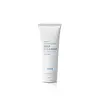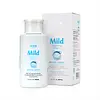What's inside
What's inside
 Key Ingredients
Key Ingredients

 Benefits
Benefits

 Concerns
Concerns

 Ingredients Side-by-side
Ingredients Side-by-side

Paraffinum Liquidum
EmollientWater
Skin ConditioningPropylene Glycol
HumectantPetrolatum
EmollientIsopropyl Myristate
EmollientPolysorbate 60
EmulsifyingCetyl Alcohol
EmollientGlyceryl Stearate
EmollientPEG-100 Stearate
Caprylic/Capric Triglyceride
Masking1,2-Hexanediol
Skin ConditioningBeeswax
Emulsion StabilisingButylene Glycol
HumectantCamellia Sinensis Leaf Water
MaskingCarbomer
Emulsion StabilisingCentella Asiatica Extract
CleansingCera Alba
EmollientCeramide NP
Skin ConditioningDaucus Carota Sativa Root
Skin ConditioningDaucus Carota Sativa Root Extract
Skin ConditioningDimethicone
EmollientDisodium EDTA
Ethylhexylglycerin
Skin ConditioningFicus Carica Fruit Extract
HumectantGinkgo Biloba Leaf Extract
Skin ConditioningGlycerin
HumectantHydrogenated Lecithin
EmulsifyingMacadamia Integrifolia Seed Oil
Skin ConditioningPanax Ginseng Root Extract
EmollientParfum
MaskingSorbitan Sesquioleate
EmulsifyingSorbitan Stearate
EmulsifyingStearyl Glycyrrhetinate
Skin ConditioningTocopherol
AntioxidantTocopheryl Acetate
AntioxidantTromethamine
BufferingXanthan Gum
EmulsifyingPhenoxyethanol
PreservativeSorbic Acid
PreservativeLinalool
PerfumingParaffinum Liquidum, Water, Propylene Glycol, Petrolatum, Isopropyl Myristate, Polysorbate 60, Cetyl Alcohol, Glyceryl Stearate, PEG-100 Stearate, Caprylic/Capric Triglyceride, 1,2-Hexanediol, Beeswax, Butylene Glycol, Camellia Sinensis Leaf Water, Carbomer, Centella Asiatica Extract, Cera Alba, Ceramide NP, Daucus Carota Sativa Root, Daucus Carota Sativa Root Extract, Dimethicone, Disodium EDTA, Ethylhexylglycerin, Ficus Carica Fruit Extract, Ginkgo Biloba Leaf Extract, Glycerin, Hydrogenated Lecithin, Macadamia Integrifolia Seed Oil, Panax Ginseng Root Extract, Parfum, Sorbitan Sesquioleate, Sorbitan Stearate, Stearyl Glycyrrhetinate, Tocopherol, Tocopheryl Acetate, Tromethamine, Xanthan Gum, Phenoxyethanol, Sorbic Acid, Linalool
Water
Skin ConditioningButylene Glycol
HumectantPEG-6 Caprylic/Capric Glycerides
EmulsifyingDipropylene Glycol
HumectantPhenoxyethanol
PreservativeSodium Citrate
BufferingHydrogenated Lecithin
EmulsifyingAmaranthus Caudatus Seed Extract
Skin ConditioningUlmus Davidiana Root Extract
Skin ConditioningCentella Asiatica Extract
CleansingFicus Carica Fruit Extract
HumectantAnthemis Nobilis Flower Water
MaskingCamellia Sinensis Leaf Water
MaskingLippia Citriodora Leaf Extract
AstringentPhellinus Linteus/Rice Ferment Extract
EmollientAlthaea Officinalis Leaf/Root Extract
EmollientAnthemis Nobilis Flower Extract
MaskingFoeniculum Vulgare Fruit Extract
EmollientHouttuynia Cordata Extract
Skin ConditioningLavandula Angustifolia Extract
Skin ConditioningOcimum Basilicum Flower/Leaf Extract
TonicRosmarinus Officinalis Leaf Extract
AntimicrobialCitrus Madurensis Fruit Extract
Skin ConditioningCitric Acid
BufferingDisodium EDTA
Ethylhexylglycerin
Skin ConditioningParfum
MaskingCeramide NP
Skin ConditioningPyrus Malus Fruit Water
MaskingWater, Butylene Glycol, PEG-6 Caprylic/Capric Glycerides, Dipropylene Glycol, Phenoxyethanol, Sodium Citrate, Hydrogenated Lecithin, Amaranthus Caudatus Seed Extract, Ulmus Davidiana Root Extract, Centella Asiatica Extract, Ficus Carica Fruit Extract, Anthemis Nobilis Flower Water, Camellia Sinensis Leaf Water, Lippia Citriodora Leaf Extract, Phellinus Linteus/Rice Ferment Extract, Althaea Officinalis Leaf/Root Extract, Anthemis Nobilis Flower Extract, Foeniculum Vulgare Fruit Extract, Houttuynia Cordata Extract, Lavandula Angustifolia Extract, Ocimum Basilicum Flower/Leaf Extract, Rosmarinus Officinalis Leaf Extract, Citrus Madurensis Fruit Extract, Citric Acid, Disodium EDTA, Ethylhexylglycerin, Parfum, Ceramide NP, Pyrus Malus Fruit Water
 Reviews
Reviews

Ingredients Explained
These ingredients are found in both products.
Ingredients higher up in an ingredient list are typically present in a larger amount.
Butylene Glycol (or BG) is used within cosmetic products for a few different reasons:
Overall, Butylene Glycol is a safe and well-rounded ingredient that works well with other ingredients.
Though this ingredient works well with most skin types, some people with sensitive skin may experience a reaction such as allergic rashes, closed comedones, or itchiness.
Learn more about Butylene GlycolCamellia Sinensis Leaf Water is a tonic and helps with masking.
Tonics are used to remove soap residues. They also help moisturize the skin.
Masking ingredients are used to obscure or block properties of other ingredients. They are commonly used to block the scent of a product.
Camellia Sinensis leaves contain antioxidants, anti-inflammatory, and anti-microbial properties.
Learn more about Camellia Sinensis Leaf WaterCentella Asiatica Extract (Centella) is derived from an herb native to Southeast Asia. It is famous for its anti-inflammatory and soothing properties.
Centella is rich in antioxidants and amino acids, such as Madecassic Acid and Asiaticoside.
Studies show the compounds in centella help with:
The combination of all these properties makes centella effective at soothing, hydrating, and protecting the skin.
Other great components of centella include Vitamin A, vitamin C, several B vitamins, and Asiatic Acid.
Fun fact: Centella has been used as a medicine and in food for many centuries. As a medicine, it is used to treat burns, scratches, and wounds.
Learn more about Centella Asiatica ExtractCeramide NP is a type of ceramide and formally known as ceramide 3.
Ceramides are intercellular lipids naturally found in our skin that bonds dead skin cells together to create a barrier. They are known for their ability to hold water and thus are a great ingredient for dry skin.
Ceramides are an important building block for our skin barrier. A stronger barrier helps the skin look more firm and hydrated. By bolstering the skin ceramides act as a barrier against irritating ingredients. This can help with inflammation as well.
If you would like to eat ceramides, sweet potatoes contain a small amount.
Read more about other common types of ceramides here:
Ceramide AP
Ceramide EOP
Disodium EDTA plays a role in making products more stable by aiding other preservatives.
It is a chelating agent, meaning it neutralizes metal ions that may be found in a product.
Disodium EDTA is a salt of edetic acid and is found to be safe in cosmetic ingredients.
Learn more about Disodium EDTAEthylhexylglycerin (we can't pronounce this either) is commonly used as a preservative and skin softener. It is derived from glyceryl.
You might see Ethylhexylglycerin often paired with other preservatives such as phenoxyethanol. Ethylhexylglycerin has been found to increase the effectiveness of these other preservatives.
Ficus Carica Fruit Extract comes from the fruit known as the fig. Figs are rich in antioxidants and helps hydrate the skin.
Figs also contain fatty acids and Vitamins A, B1, and B2.
As a humectant, figs are able to draw moisture from the air to your skin. This helps keep your skin hydrated.
Learn more about Ficus Carica Fruit ExtractHydrogenated Lecithin is created from the hydrogenation of lecithin (a group of phospholipids). Hydrogenation is a chemical reaction between hydrogen and another element.
This ingredient is an emollient and emulsifier. As an emollient, it helps soften skin by trapping moisture within. As an emulsifier, it prevents oil and water ingredients from separating.
Parfum is a catch-all term for an ingredient or more that is used to give a scent to products.
Also called "fragrance", this ingredient can be a blend of hundreds of chemicals or plant oils. This means every product with "fragrance" or "parfum" in the ingredients list is a different mixture.
For instance, Habanolide is a proprietary trade name for a specific aroma chemical. When used as a fragrance ingredient in cosmetics, most aroma chemicals fall under the broad labeling category of “FRAGRANCE” or “PARFUM” according to EU and US regulations.
The term 'parfum' or 'fragrance' is not regulated in many countries. In many cases, it is up to the brand to define this term.
For instance, many brands choose to label themselves as "fragrance-free" because they are not using synthetic fragrances. However, their products may still contain ingredients such as essential oils that are considered a fragrance by INCI standards.
One example is Calendula flower extract. Calendula is an essential oil that still imparts a scent or 'fragrance'.
Depending on the blend, the ingredients in the mixture can cause allergies and sensitivities on the skin. Some ingredients that are known EU allergens include linalool and citronellol.
Parfum can also be used to mask or cover an unpleasant scent.
The bottom line is: not all fragrances/parfum/ingredients are created equally. If you are worried about fragrances, we recommend taking a closer look at an ingredient. And of course, we always recommend speaking with a professional.
Learn more about ParfumPhenoxyethanol is a preservative that has germicide, antimicrobial, and aromatic properties. Studies show that phenoxyethanol can prevent microbial growth. By itself, it has a scent that is similar to that of a rose.
It's often used in formulations along with Caprylyl Glycol to preserve the shelf life of products.
Water. It's the most common cosmetic ingredient of all. You'll usually see it at the top of ingredient lists, meaning that it makes up the largest part of the product.
So why is it so popular? Water most often acts as a solvent - this means that it helps dissolve other ingredients into the formulation.
You'll also recognize water as that liquid we all need to stay alive. If you see this, drink a glass of water. Stay hydrated!
Learn more about Water